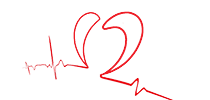OHH News
Posted on February 20th, 2019
A pulmonary embolism is a blood clot that blocks the artery that carries blood from the heart to the lungs. It’s a serious condition that can cause damage to the lungs and low levels of oxygen in the blood. In severe cases, it can be fatal.
The pulmonary artery carries blood from your heart to your lungs. Once the blood receives oxygen from the lungs, it goes back to the heart and then is pumped... Read More
Posted on February 5th, 2019
An abnormal heart rhythm is when your heart beats too fast or too slow or when the beats are irregular. If you’ve been diagnosed with an abnormal heart rhythm or suspect you have one, you may be wondering what impact exercise could have on your heart. Should you exercise if you have an abnormal heart rhythm? Could it make it better or worse?
In general,... Read More
Posted on January 29th, 2019
Go Red for Women is an annual event encouraging people to wear red to raise awareness of heart disease and its impact on women. Wear Red Day is the first Friday in February every year.
The statistics about heart disease and women are staggering. Heart disease is the number one killer of women and is responsible for one in three deaths of women. Each year, more women die from heart disease... Read More
Posted on January 20th, 2019
Blood pressure is the measurement of the strength at which your blood pushes against the walls of your blood vessels as it moves through the body. High blood pressure, also called hypertension, is a fairly common but sometimes serious condition. If left untreated, it can lead to... Read More
Posted on January 10th, 2019
The heart is a powerful muscle that pumps blood through the body to deliver oxygen and nutrients and carry away waste. The lower chambers of the heart, called ventricles, are responsible for pumping blood to your body. But some conditions, like narrowed arteries or high blood pressure, can damage the heart... Read More
Posted on January 1st, 2019
Tachycardia is a general term used to describe a heart that beats too fast, which is typically classified as beating more than 100 beats per minute. Ventricular tachycardia is a specific type where the issue originates with abnormal electrical signals in the lower chambers, or ventricles, of the heart.... Read More
Posted on December 20th, 2018
Computerized tomography (CT or CAT) scans can be used to evaluate health conditions in many parts of the body, including organs, tissue, and bones. A cardiac CT scan helps doctors view the structure of your heart and the surrounding arteries to diagnosis heart disease.
How does a CT scan work?
A CT scan uses x-ray to take pictures of your heart from different angles. Then a computer puts... Read More
Posted on December 10th, 2018
It’s not uncommon for someone who has suffered a heart attack or been diagnosed with other heart disease to feel sad or depressed. But if symptoms of depression last longer than two weeks or are severe, you should discuss your symptoms with your doctor.
There’s a strong link between cardiovascular disease and depression. About one in five people who suffer a heart attack experience... Read More
Posted on December 1st, 2018
Cardioversion is a treatment used to restore a normal heart rhythm for patients who have an irregular rhythm, also called an arrhythmia. Cardioversion is primarily used to treat atrial fibrillation, or AFib, which is the most common heart rhythm issue. It can also be used to treat other irregular... Read More
Posted on November 13th, 2018
Oklahoma Heart Hospital received awards for the sixth consecutive year from Press Ganey Associates, Inc., for high levels of patient satisfaction. Oklahoma Heart Hospital (OHH) is widely known for its commitment to patient care and satisfaction, and these awards further showcase that commitment.
The Guardian of Excellence Award® in Patient Experience honors organizations that have reached... Read More













